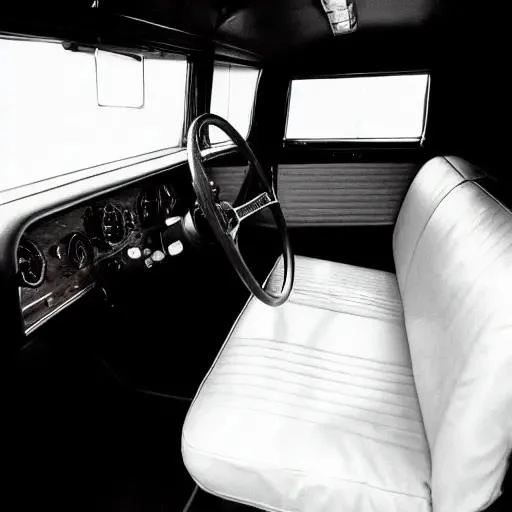
In moments of profound grief, every detail matters․ The journey to a final resting place, often a silent procession of solemnity, relies heavily on vehicles designed for dignity and solace․ When we contemplate a “funeral car,” our minds typically conjure images of the traditional hearse, elegantly bearing the deceased․ Yet, this mental picture often overlooks a crucial, often misunderstood aspect: the vital role of accompanying vehicles and their surprisingly thoughtful seating arrangements, providing a crucial haven for grieving families․ Beyond mere transportation, these meticulously designed vehicles serve as mobile sanctuaries, offering privacy, comfort, and a shared space for reflection during an incredibly challenging time;
The funeral industry, continuously evolving to meet changing societal needs, has transformed what might seem like a simple question about capacity into a testament to human empathy and sophisticated engineering․ No longer just about moving from one point to another, modern funeral transport is about curating an experience of respect and quiet support․ By integrating insights from compassionate service providers and cutting-edge automotive design, these vehicles are crafted to subtly alleviate some of the burdens of loss, offering a discreet yet remarkably effective environment for those navigating the initial stages of farewell․
Understanding Funeral Vehicle Capacities: A Comprehensive Guide
Below is a detailed breakdown of the different types of funeral vehicles and their typical seating arrangements, designed to inform and clarify their distinct purposes within a funeral procession․
| Vehicle Type | Primary Function | Typical Seating Capacity (Excluding Driver) | Key Design Features | Modern Trends & Considerations |
|---|---|---|---|---|
| Hearse | Transporting the casket/urn with utmost dignity․ | 1-2 (often a single passenger seat for an attendant or funeral director, rarely for family members)․ | Extended rear compartment for casket, discreet styling, often custom-built on luxury chassis․ | Emphasis on fuel efficiency (hybrid/electric options emerging), advanced suspension for a smooth ride, customizable aesthetics․ |
| Funeral Limousine | Transporting immediate family members and close friends․ | 6-7 passengers (standard stretch limousine configuration)․ | Spacious, private cabin, often with facing seats, tinted windows, climate control, and luxury finishes․ | Increased demand for privacy and comfort, integration of subtle technology (e․g․, charging ports), eco-friendly models gaining traction․ |
| Family Car / Escort Vehicle | Providing transport for additional family members or pallbearers, often in smaller groups․ | 3-5 passengers (standard sedan or SUV capacity)․ | Discreet, often high-end sedans or SUVs, blending seamlessly with the procession․ | Focus on modern amenities, safety features, and a less formal yet equally dignified transport option․ |
| Flower Car (less common now) | Transporting floral tributes and other memorial items․ | 0-1 (driver only, or driver + one attendant)․ | Open or partially open rear compartment for display, often matching the hearse in style․ | Declining use as floral tributes become more consolidated or digital; sometimes combined with other vehicle functions․ |
For further reference on funeral traditions and services, you can visit the National Funeral Directors Association (NFDA) website․
The distinction between a hearse and a funeral limousine is paramount in understanding seating․ A hearse, the iconic vehicle carrying the casket, is primarily engineered for that singular, sacred purpose․ Its expansive rear compartment is meticulously designed to secure the coffin, ensuring a smooth and respectful passage․ Consequently, seating in a hearse is minimal, typically limited to the driver and perhaps one additional seat for a funeral director or attendant, whose presence is crucial for operational support and immediate oversight․ This design choice underscores the hearse’s specialized function, prioritizing the dignified transport of the deceased above all else․
Conversely, the funeral limousine is where the question of seating truly unfolds․ These vehicles are specifically tailored to transport the immediate family, offering a private, tranquil space during the procession․ Standard funeral limousines, often extended versions of luxury sedans, are typically configured to comfortably accommodate six to seven passengers, plus the chauffeur․ This generous capacity allows close family members to travel together, finding solace in shared grief and mutual support․ Imagine a secluded chamber on wheels, offering a precious bubble of privacy from the outside world, a place where tears can flow freely and silent comfort can be exchanged without external intrusion․
The evolution of these vehicles reflects a broader societal shift in how we approach death and remembrance․ Decades ago, funeral processions might have involved numerous family cars․ Today, there’s an increasing preference for consolidated, professionally managed transport that guarantees comfort, privacy, and impeccable timing․ Leading manufacturers and bespoke coachbuilders invest heavily in creating interiors that exude serenity, featuring plush seating, advanced climate control, and soundproofing to ensure a remarkably peaceful environment․ This dedication to detail transforms a utilitarian vehicle into a compassionate extension of the funeral service itself, embodying a profound respect for the bereaved․
Looking ahead, the future of funeral transport promises even greater innovation․ We are already seeing the emergence of electric and hybrid funeral vehicles, reflecting a growing global commitment to sustainability and quieter operations․ Furthermore, the concept of personalized funeral cars, perhaps with bespoke interiors or even integrated multimedia capabilities for displaying cherished memories, is not a distant dream but a tangible possibility․ These advancements aren’t merely about technological prowess; they are about enhancing the human experience, ensuring that even in moments of sorrow, comfort, dignity, and personal reflection remain paramount․ The funeral car, in all its forms, is truly a testament to humanity’s enduring capacity for empathy and innovation, quietly supporting us through life’s most challenging transitions․
